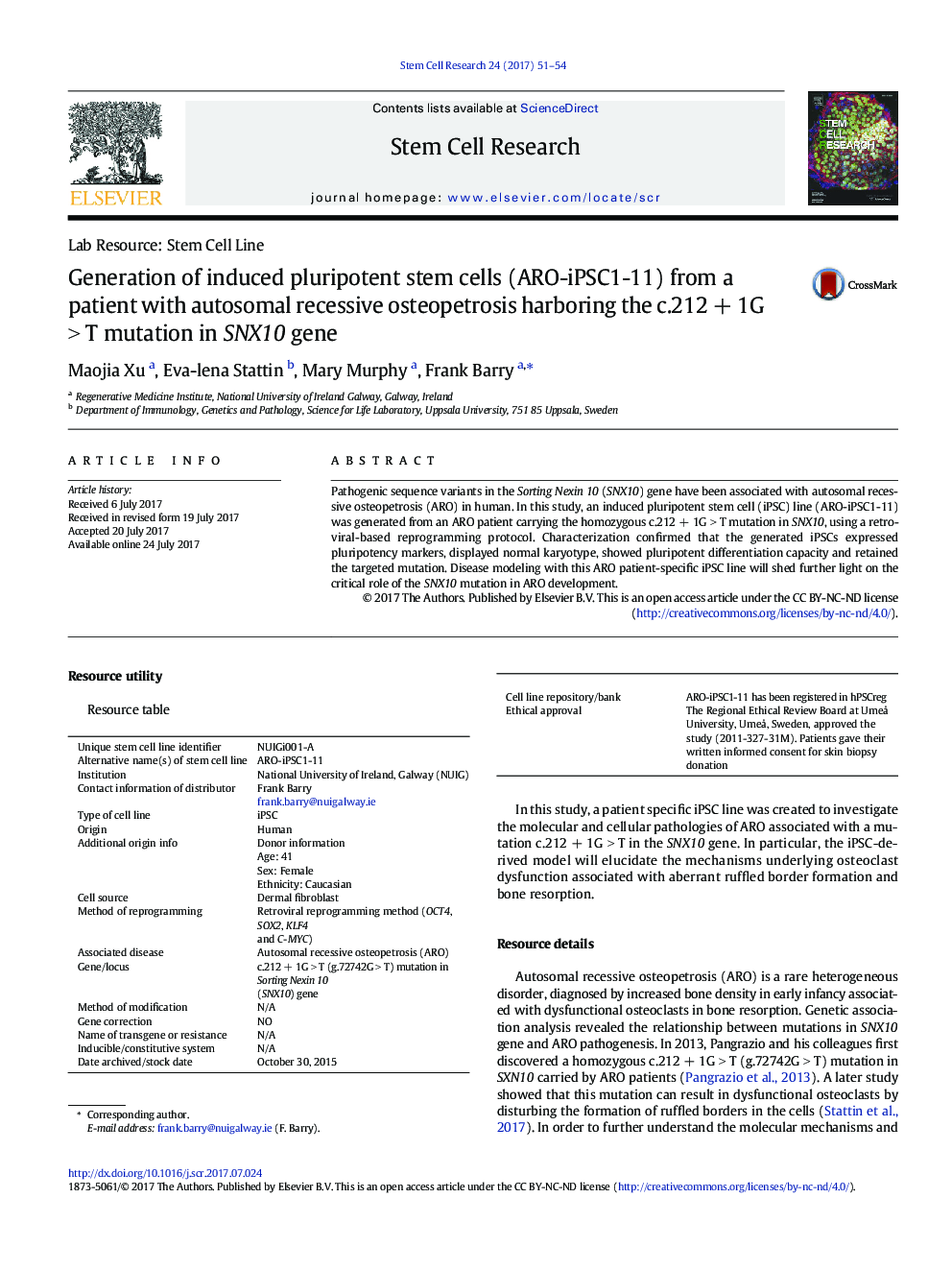| Article ID | Journal | Published Year | Pages | File Type |
|---|---|---|---|---|
| 5522700 | Stem Cell Research | 2017 | 4 Pages |
â¢An iPSCs line is generated from an ARO patient with known mutation in SNX10 gene.â¢Detailed characterization confirms the pluripotency state of the cells.â¢The SNX10 mutation is retained in the patient's iPSC line.â¢The ARO-iPSCs can be used for disease modeling and therapeutic development.â¢It can also uncover the roles of the SNX10 gene in other cell types and disorders.
Pathogenic sequence variants in the Sorting Nexin 10 (SNX10) gene have been associated with autosomal recessive osteopetrosis (ARO) in human. In this study, an induced pluripotent stem cell (iPSC) line (ARO-iPSC1-11) was generated from an ARO patient carrying the homozygous c.212Â +Â 1GÂ >Â T mutation in SNX10, using a retroviral-based reprogramming protocol. Characterization confirmed that the generated iPSCs expressed pluripotency markers, displayed normal karyotype, showed pluripotent differentiation capacity and retained the targeted mutation. Disease modeling with this ARO patient-specific iPSC line will shed further light on the critical role of the SNX10 mutation in ARO development.
